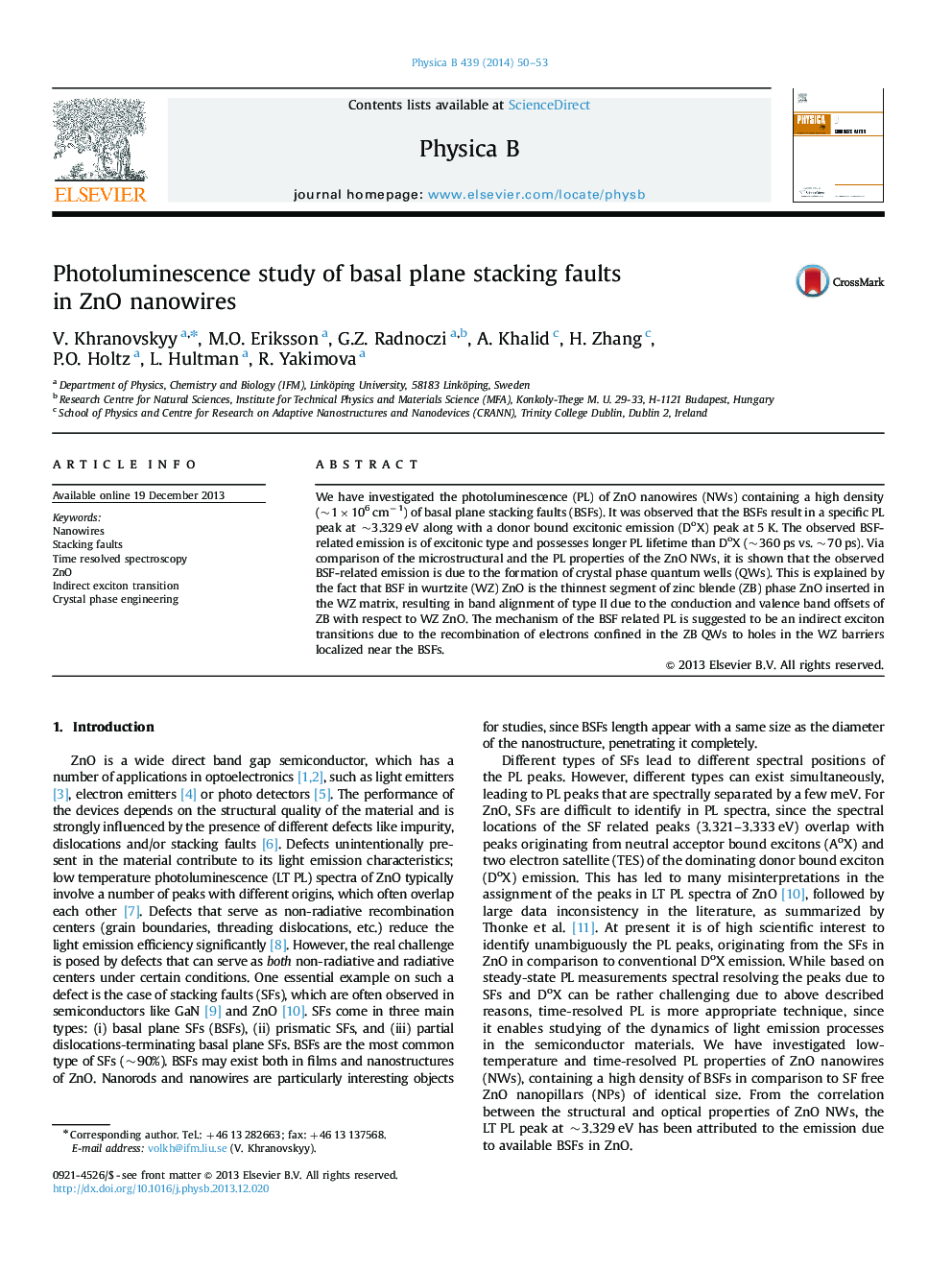| Article ID | Journal | Published Year | Pages | File Type |
|---|---|---|---|---|
| 1809663 | Physica B: Condensed Matter | 2014 | 4 Pages |
We have investigated the photoluminescence (PL) of ZnO nanowires (NWs) containing a high density (~1×106 cm−1) of basal plane stacking faults (BSFs). It was observed that the BSFs result in a specific PL peak at ~3.329 eV along with a donor bound excitonic emission (DoX) peak at 5 K. The observed BSF-related emission is of excitonic type and possesses longer PL lifetime than DoX (~360 ps vs. ~70 ps). Via comparison of the microstructural and the PL properties of the ZnO NWs, it is shown that the observed BSF-related emission is due to the formation of crystal phase quantum wells (QWs). This is explained by the fact that BSF in wurtzite (WZ) ZnO is the thinnest segment of zinc blende (ZB) phase ZnO inserted in the WZ matrix, resulting in band alignment of type II due to the conduction and valence band offsets of ZB with respect to WZ ZnO. The mechanism of the BSF related PL is suggested to be an indirect exciton transitions due to the recombination of electrons confined in the ZB QWs to holes in the WZ barriers localized near the BSFs.
